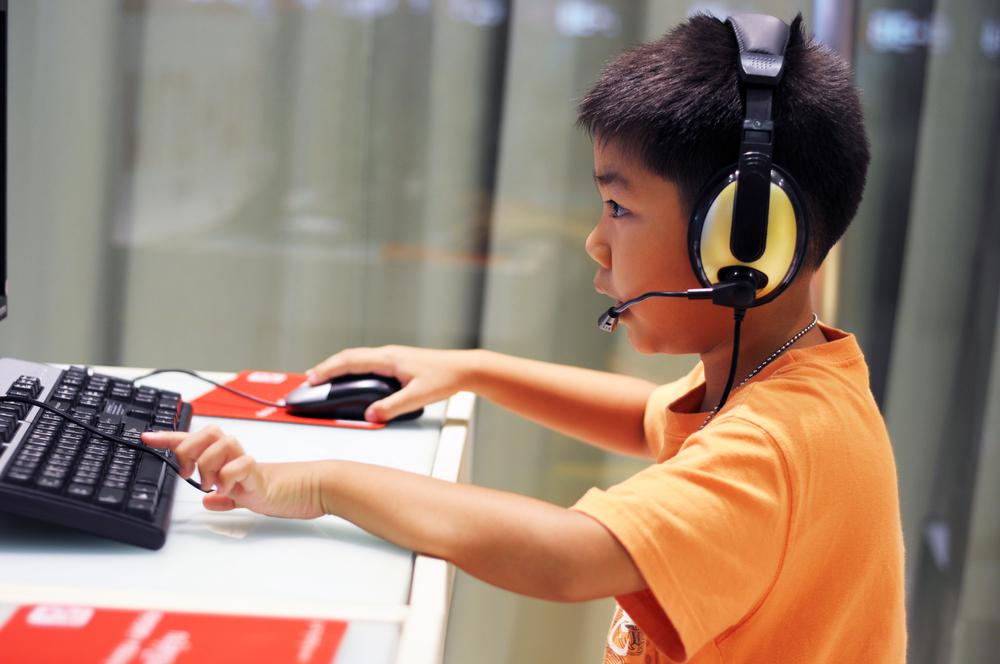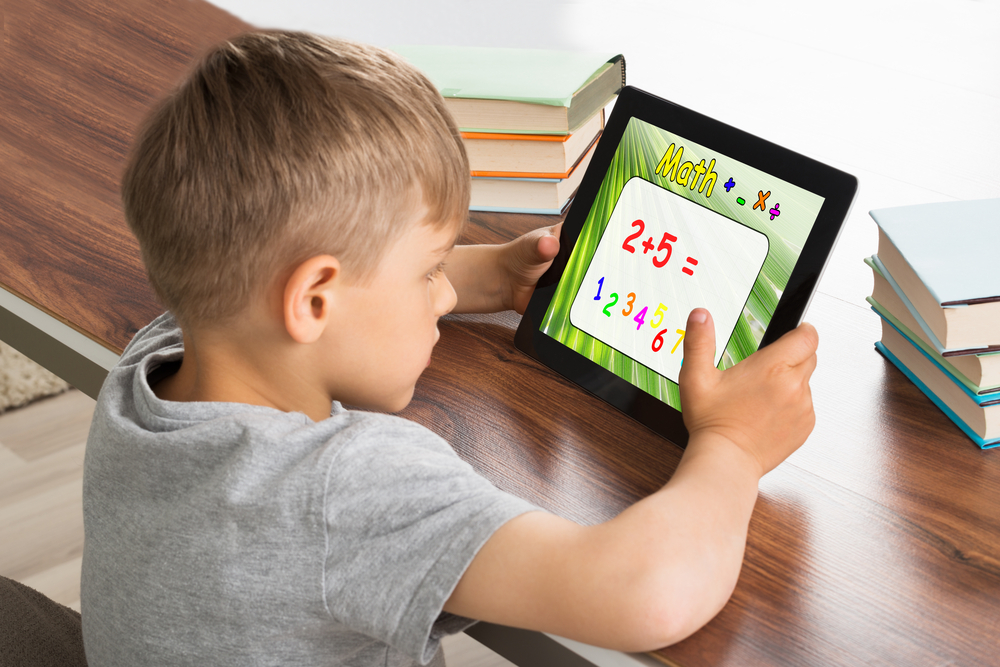Story sequencing Normal Worksheets for Ages 4-5
8 filtered results
-
From - To
Discover our engaging Story Sequencing Worksheets tailored for ages 4-5! Perfect for early learners, these colorful worksheets make mastering the skill of story sequencing enjoyable and effective. Each worksheet offers fun activities that encourage kids to arrange pictures in the correct order, helping them understand the beginning, middle, and end of a story. Building these foundational skills enhances their reading comprehension and critical thinking. Ideal for use at home or in the classroom, our printable worksheets are designed to promote lifelong learning habits while making early education exciting for young minds. Try them today on Kids Academy!
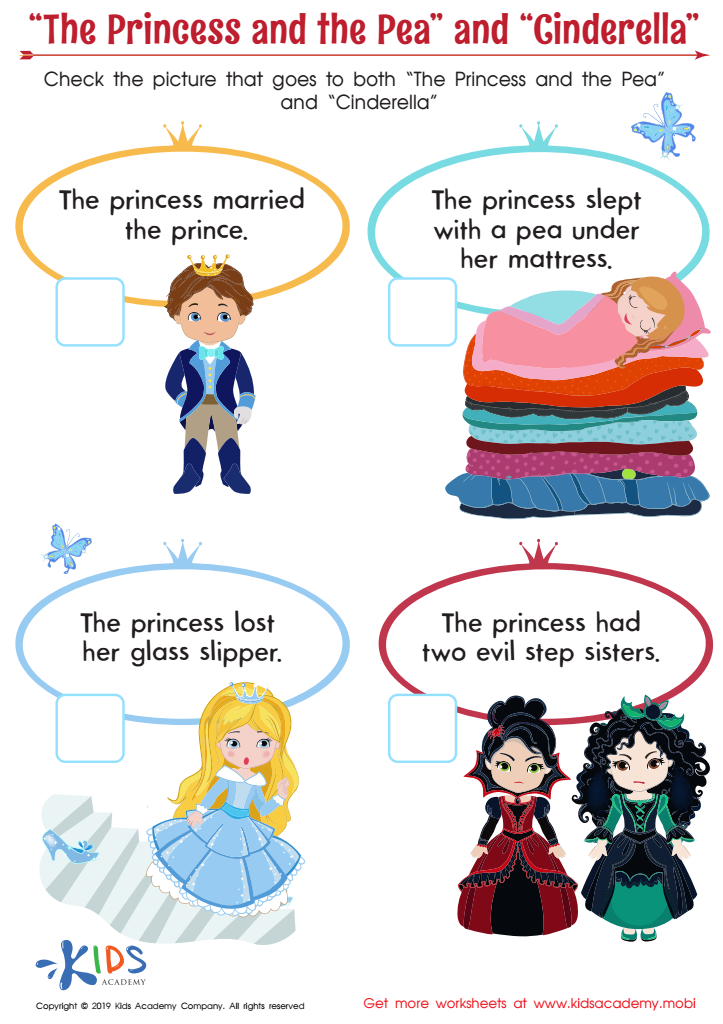

“The Princess and the Pea” and “Cinderella” Worksheet
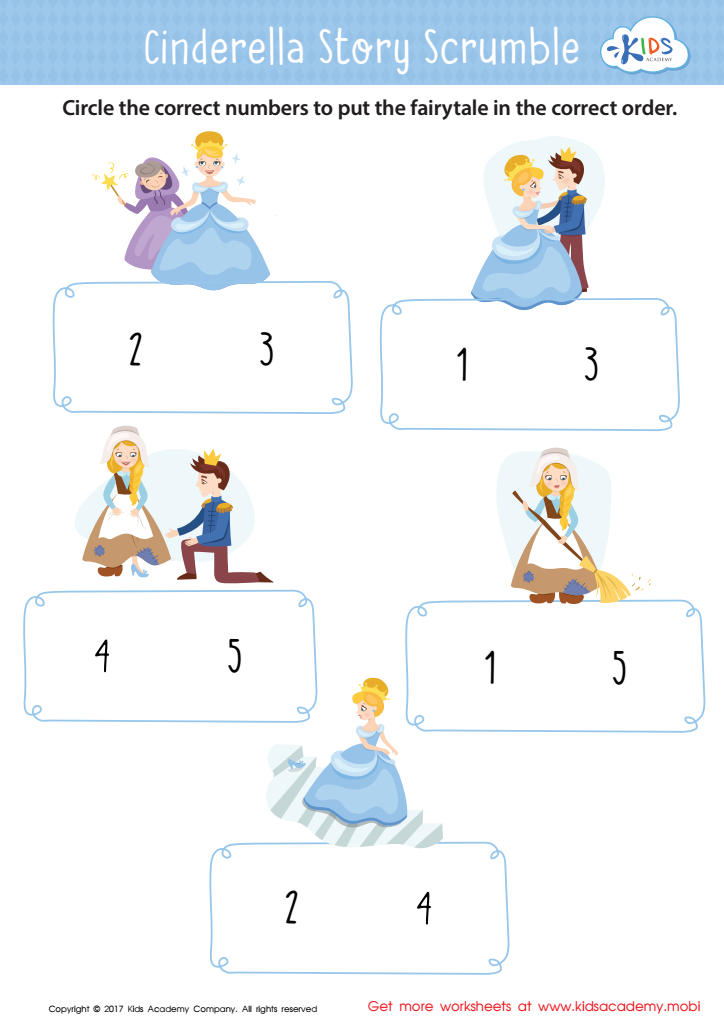

Cinderella Story Sequencing Worksheet


Picture in Books Worksheet
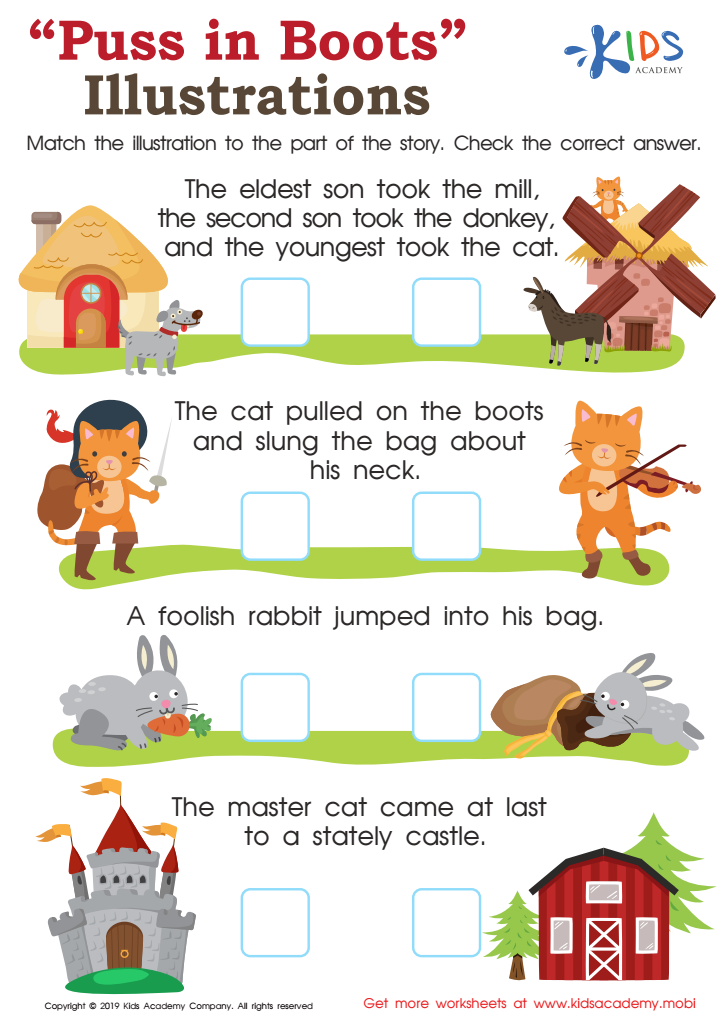

Puss in Boots Illustrations Worksheet
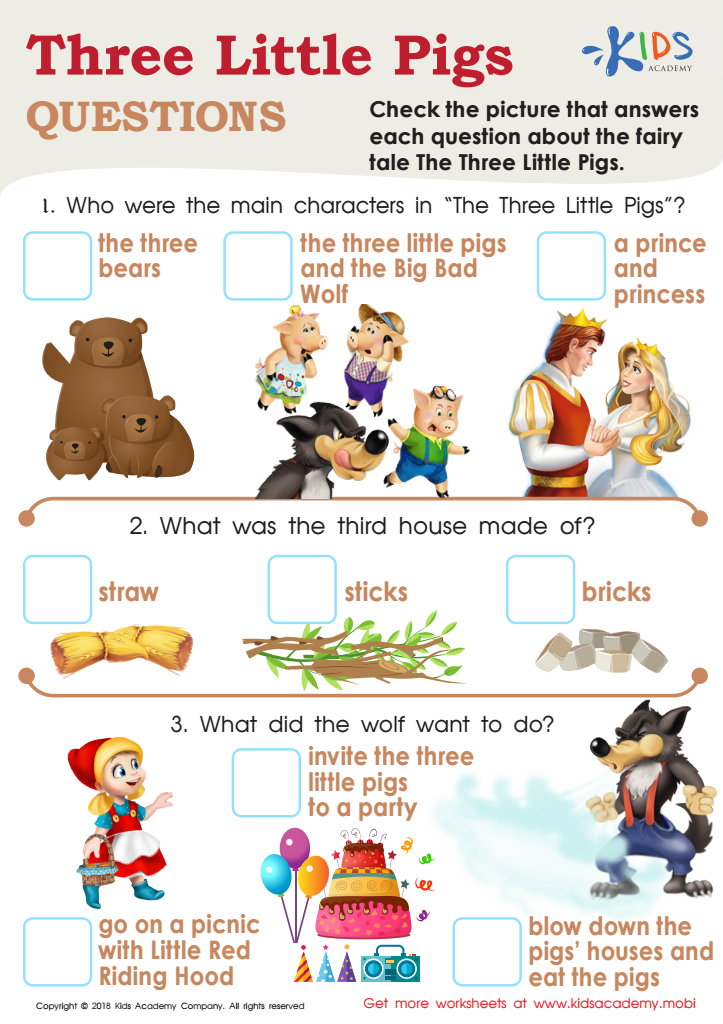

Three Little Pigs Questions Worksheet
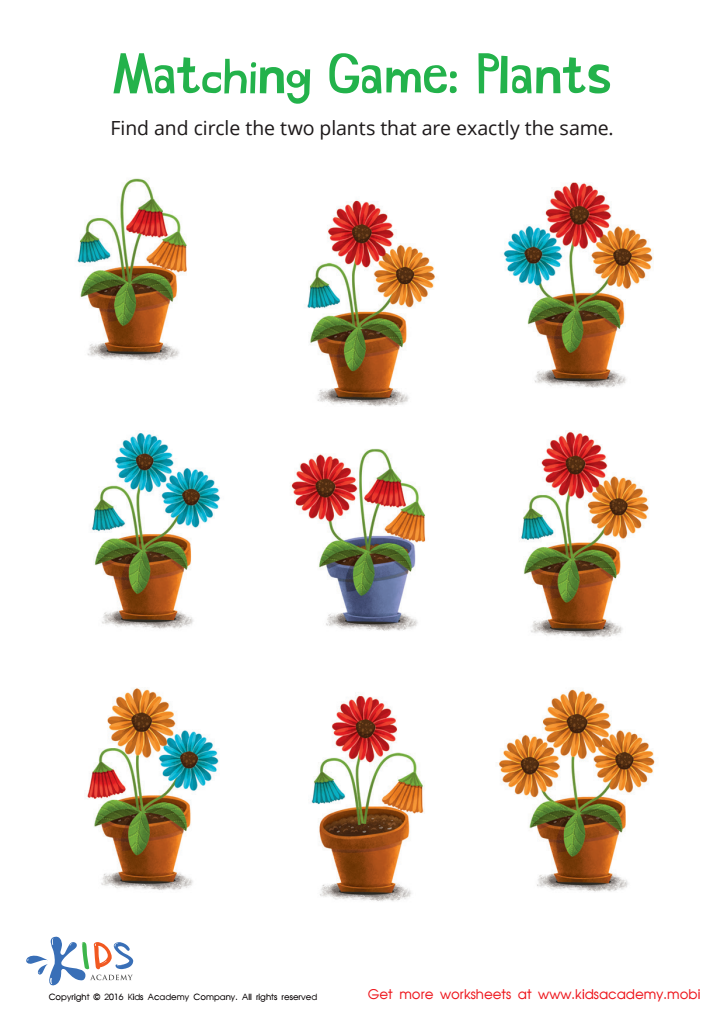

Matching: Plants Worksheet
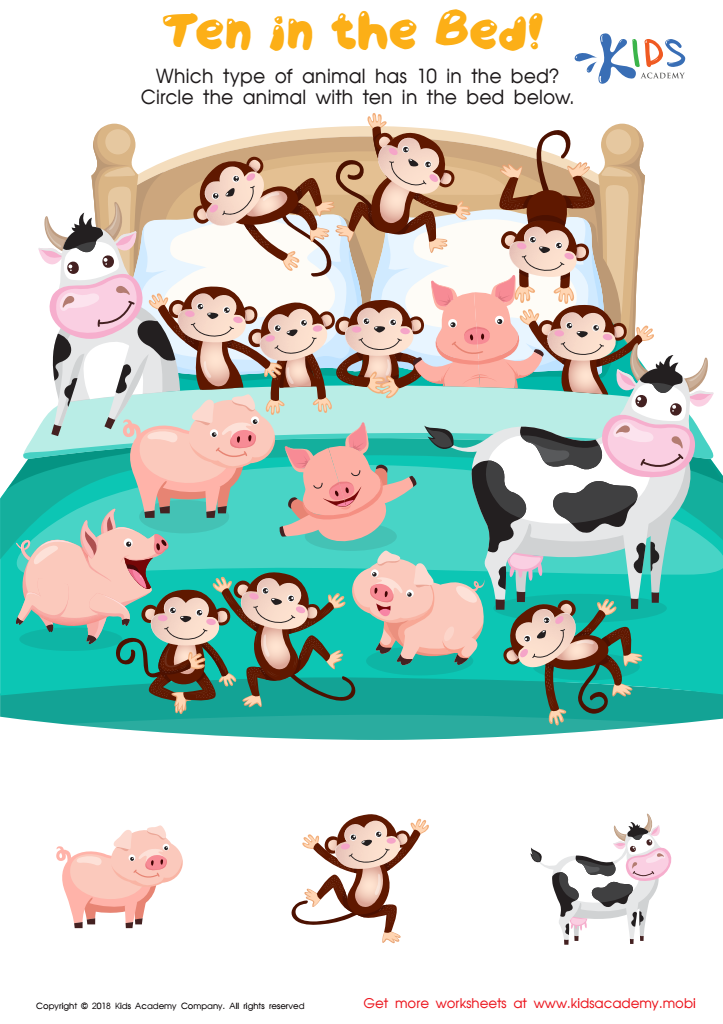

Ten in the Bed Worksheet
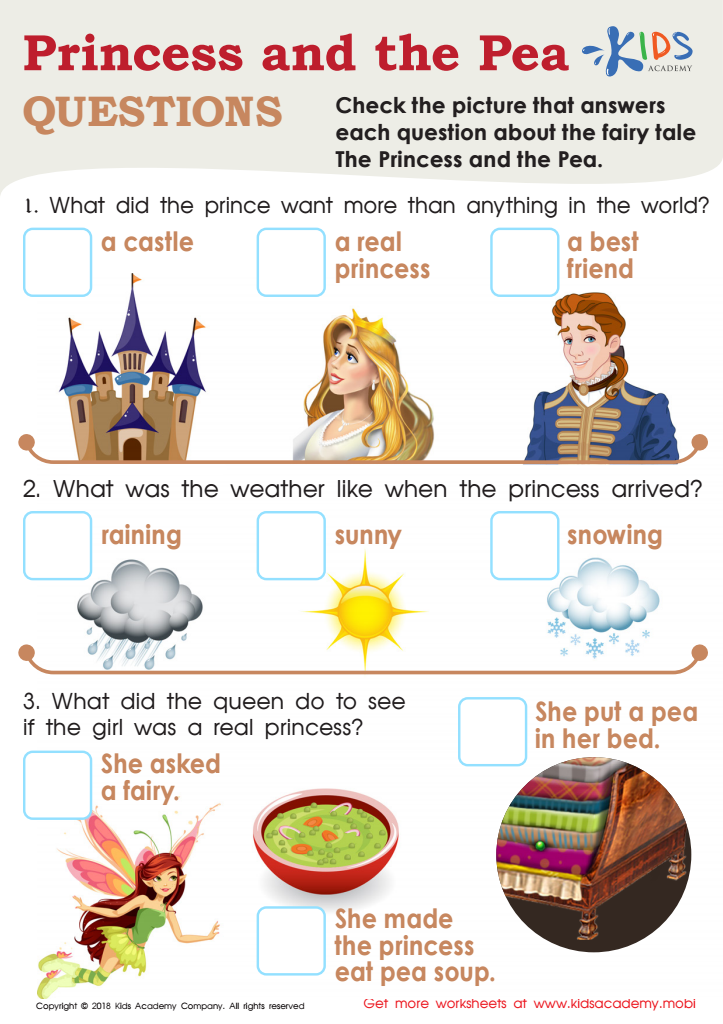

Princess and the Pea Questions Worksheet
Story sequencing is an important skill for children aged 4-5, helping develop essential cognitive and linguistic skills they need for overall education. Parents and teachers should prioritize teaching story sequencing as it plays a fundamental role in a child's literacy and communication abilities.
At this age, children begin to understand the concepts of "beginning," "middle," and "end". Recognizing and arranging events in a logical order helps them comprehend stories better, which enhances their reading skills and prepares them for more complex texts in the future. Moreover, sequencing aids in memory retention and recall, allowing children to understand cause-and-effect relationships and sequences of actions.
From a language development perspective, sequencing stories encourages the use of new vocabulary and complex sentence structures, thereby promoting expressive language skills. Additionally, it supports critical thinking and problem-solving abilities as children learn to predict outcomes and organize information systematically.
Socially and emotionally, story sequencing helps in the development of empathy and understanding. When children can recount and sequence personal experiences or stories, they not only convey their feelings and thoughts more effectively but also actively listen and understand others.
Engaging young learners in sequencing activities, such as arranging picture cards or retelling simple stories, therefore, is a practical way to boost their early literacy, cognitive development, and social-emotional growth.

 Assign to My Students
Assign to My Students




